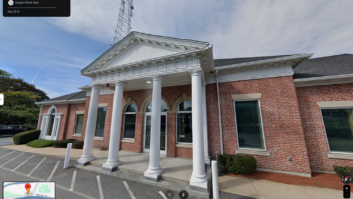I have said it before, I will say it again: When you have a Harmonizer in your production rack, you are one rockin’ daddy.
Product CapsuleThumbs Up
Open-ended programmability
Multiple sample rates
Outstanding audio quality
Broadcast-ready effects right out of the box
Simple interface
Thumbs Down
Some presets are disabled at high sample rates
Vocoder could be better
Price: $3,995
For information, contact Eventide in New Jersey at (201) 641-1200; e-mail: [email protected]; or visit www.eventide.com
All the musical instrument (MI)-type reverbs and budget-line multi-effect boxes in use today pale in comparison to an Eventide processor. It makes a bold visual statement when bolted in with all the other rack-mount components and still sounds as sweet as anything anywhere.
And it does what software-based audio products do not: it offers a real-time experience that enhances performance.
The H4000B+ Ultra-Harmonizer has a quick and easy user interface, lots of programming options and a slew of specialized preset effects, many designed by Boston production god Jay Rose and Andrew Schlesinger, whose nickname “Drew” turns up in numerous presets.
The H4000B+ actually is based on the 24-bit/96-kHz DSP7000 platform, hence the “+” in the name. As for the “B,” think Broadcast.
Either way, the H4000B+ should be on the top of your list when rethinking a production facility or planning a new one.
Software alternative
All-inclusive computer-based DAW software such as Cool Edit or Pro Tools are fast becoming favorites in production facilities because they often negate the need to purchase an outboard effects device, let alone one that can cost 10 times or more that of the software.
This is a valid point, but equally valid is the need for the real-time experience when recording voice tracks.
Say you need to do a Suunnn-daaay drag race pitch shift on your voice. A device such as the H4000B+ Ultra-Harmonizer performs the process live on the fly, allowing you to tweak the settings or the vocal performance itself in real time.
For the voice talent, this often results in a better performance, preferable to capturing a normally voiced track then going in to tweak and render it with a plug-in.
Need proof? If you were voicing a spot that places you in a cavern, a concert hall or in an airline cockpit, wouldn’t you want to hear the process happening in your headphones as you are doing it? Singers do it all the time in the studio: a touch of reverb in the cans brings out an enhanced performance.
For me, this remains the strength of the Ultra-Harmonizer – that I turn in a good read or character performance because I can “feel” the part I am doing without compromise. And there is no fan noise, such as you would have with an in-studio computer.
Another major plus: A device such as the H4000B+ combines many effects in one real-time pass. In DAW software, you must often add effects one at a time, or do a batch process. Even then, you are not guaranteed a satisfactory result compared to hearing the performance in the headphones as it is being laid down.
Hands on
If you have ever handled any Eventide product made in the last eight years or so, running the H4000B+ will be a familiar drill.
A large display, a handful of soft keys and that classic Eventide knob take care of almost all navigation through the unit’s features. A numeric keypad is present to enter parameter values directly, but experience has shown me that most users still like to give the dial a ride.
A busy back panel is filled with all the I/O options you could want, including 1/4-inch and XLR balanced analog, AES/EBU and S/PDIF digital, a cluster of MIDI jacks, and a pair of wordclock jacks to get your whole house to dance to the same beat.
All internal processing is 24 bit and the system clock sets the sample rate at 44.1, 48, 88.2 or 96 kHz (note the absence of 32 kHz, which is available only with an external clock). An external clock signal can be taken from the digital inputs and is variable from about 30 kHz up to 99 kHz.
Higher sample rates put more demands on processing resources in the H4000B+, so several of the more-elaborate presets cannot run at these high rates. The presets that can run at 96 kHz are indicated by small lightning bolts next to their names in the display.
As the requirements of radio production are not as critical as, say, DVD authoring, we can run the H4000B+ at 44.1 kHz, take advantage of all presets and still get a great sound.
The fastest way to work your way around the H4000B+ is to begin with one of the dozens of outstanding presets.
One of the most fun presets is “16mm Projector,” which faithfully recreates the old DuKane clunkers from our middle school days. Dial it up, press the Select button or the Load softkey and let the nightmare begin.
The beauty of this preset is the total control you have over parameters you would not even think of altering in the first place. For example, few of us ever really noticed the degree of hiss on those old 16mm soundtracks, let alone the amount of exciter lamp hum. By clicking the Parameter button, this preset lets you add as much or as little of either that you can handle.
Need more film gate chatter? You are free to add as much as you want.
There are even presets within the presets. You may choose from theater projectors or A/V club specials, right down to humming, noisy “surplus” type units.
These presets have a magnificent simplicity to them. In trying to recreate a shortwave radio effect in a DAW, you would have to deal with some slight ring modulation (to simulate heterodyning), and perhaps a little panning or amplitude modulation (to simulate atmospheric drift). You would find yourself entering frequencies or decibels to pin down the effect you like.
In the H4000B+, you have soft controls right up front that say little else than Drift and Manual, which do the same thing without your worrying about values or ratios.
And then there is that one soft key for the projector that says “Turn Off” – press it and your crummy projector, noise and all, grinds to a slow stop.
This simplicity is spread out over many presets. Sliding a control titled “Awful” adds increasing distortion and filtering. One marked “Key Mangle” alters a pitch-shifting preset in steps from “Yikes!” to “Tin Ear.” And a parameter called “Grease” adjusts how long a virtual turntable coasts to a stop after its “plug” has been pulled.
I have wondered if Eventide programmers are fans of the Gary Larson comic “The Far Side,” especially the one where a rock band’s sound techie ruins a performance by dialing in too much Suck on the group’s audio console. The parameter titles in the H4000B+ are right out of that book.
Joke’s over, son
The presets are fun, but the H4000B+ is also a pretty serious audio tool for the heavy work.
One entire preset bank is devoted to dynamics control, with emphasis on compressors. One preset, “4-Band Compress,” does an outstanding job on punching up voice tracks without sacrificing the nice high end. The “SemiClassic Squeeze” may remind you a little of the old Urei and dbx jobbies. There is also a bank of capable digital EQs and filters.
A few favorites from the H3000 migrated over, if you missed buying one of those outstanding processors a few years ago. Delays, automatic pitch quantization (once known as auto-tune before that term became a registered name) and some “Gregorian chant” pitch calculators that create an instant monastery in your rack.
Do not ignore the collection of digital reverbs in the H4000B+, everything from huge infinite spaces to tiled showers, with a cheap spring unit thrown in for that retro feel.
Most of the presets in the H4000B+ have been tweaked and peaked for broadcast use, some with serious intent. One preset, “Real Call-in,” is meant to be used with a phone patch to clean up phone interviews, even out dynamics, and add ducking so the host can override the guest.
Program, get your program …
The big power behind the H4000B+ is programmability – being able to take building blocks (called Modules) and tack them together to achieve a desired audio effect.
A 97-page tutorial is included with the H4000B+ that talks you through the process of choosing modules, gluing several together to create supermodules, creating and editing programs through the display of the unit or via a Windows PC, and loading them into the processor itself.
The PC can be as primitive as a 386 running Windows 95 and a program called Vsigfile (available as a free download at www.eventide.com/vsigfile/index.html). It talks to the H4000B+ via the computer’s MIDI port or the RS232 serial port. If you plan to create deep, complex processing programs, go the VSigfile route as you will have a tough time programming internally using the display on the H4000B+.
Complex processing chains can be creating in this manner, as well as all-original presets that are your own.
A second section of the manual lists the Modules and explains their features. Some have nothing to do with audio; some are math functions that tell the modules what kind of process to follow, such as a logarithmic curve to a volume fade. Some functions address specific groups, such as the filters, the reverbs or the pitch shifters.
Musicians and sound designers will make extensive use of the MIDI features found in the H4000B+, especially with external controllers. In the radio studio, these features are not emphasized, hence our token mention here. Still, it is possible to assign pitch bend and delay changes to a MIDI music keyboard and alter these parameters on the fly, should your studio and equipment complement allow it.
Conclusion
How does one justify the purchase of an H4000B+ Ultra-Harmonizer to the big boss at $3,995 retail?
If all you intend to do is dial up the usual presets, you will not have an easy time selling the idea. Any generic MI-type multi-effects box or budget DAW software will work for you.
But if you have the need to explore, to delve deeply into your audio projects and make them sound like nothing else anyone is doing, this is the processor for you.
The depth of programming and “what-if” scenarios offered to you by the H4000B+ is unprecedented in most effect processors. What would a Mixolydian or Phrygian scale sound like in a pitch shift program? How different would pitch shifting sound from frequency shifting? How much feedback should the comb filter have, and at what polarity?
These are questions that can only be explored by tapping into the programmability of the device, and why the unit costs what it does while a basic multi-effect box costs $99.
The only weakness that I encountered, if it may be called such, is the ten-band Vocoder. I hope Eventide engineers can sort out a way to make the resolution even greater. The old Bode-Moog analog units pretty much remain the domestic standard in vocoding, and modeling that sound into Harmonizer firmware would be the answer to my own concerns.
As for your own concerns, well, someday a client is going to ask you for a spot where the announcer is floating around in outer space, except outer space is filled with pudding. How on earth (literally) are you going to pull that one off?
My recommendation: the Eventide H4000B+ Ultra-Harmonizer. You could probably even create a slide controller for how much pudding you want out there.












